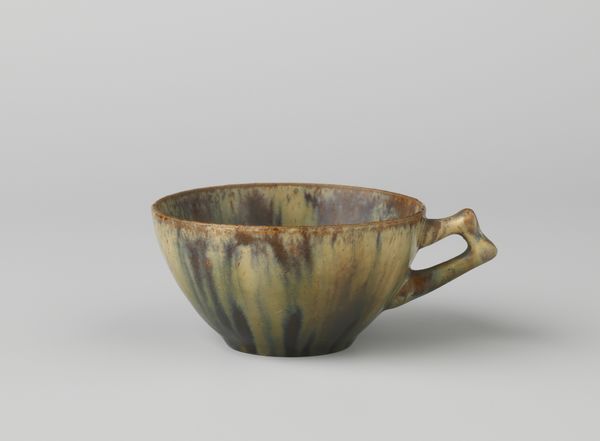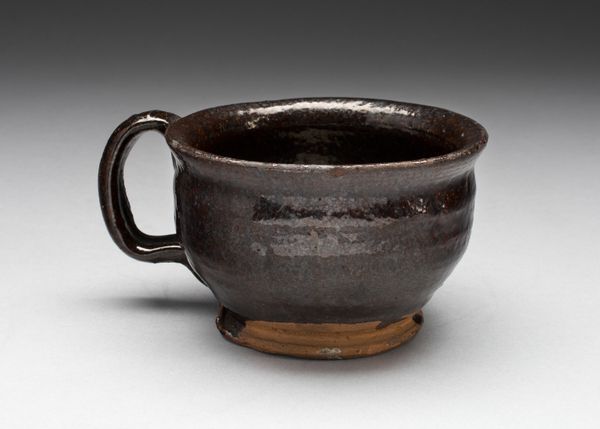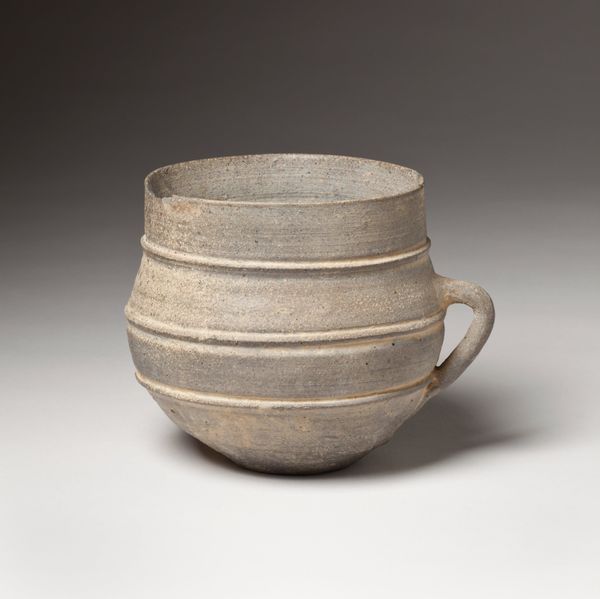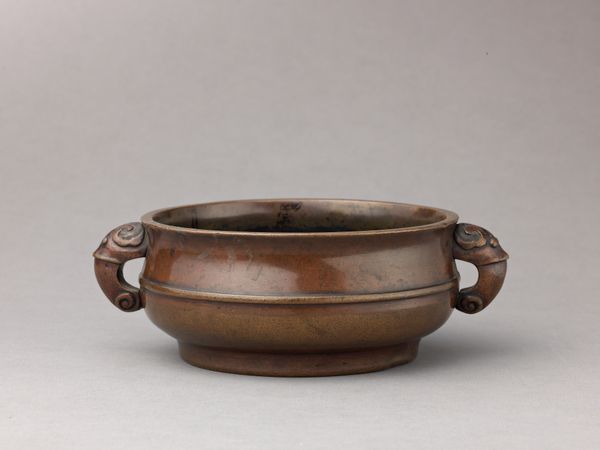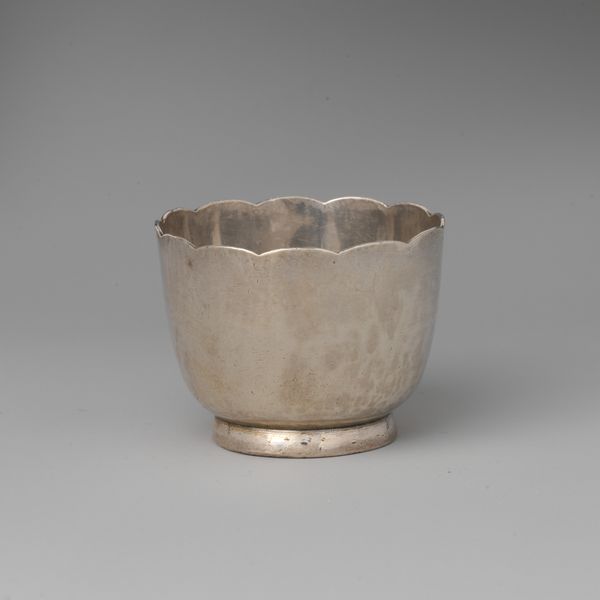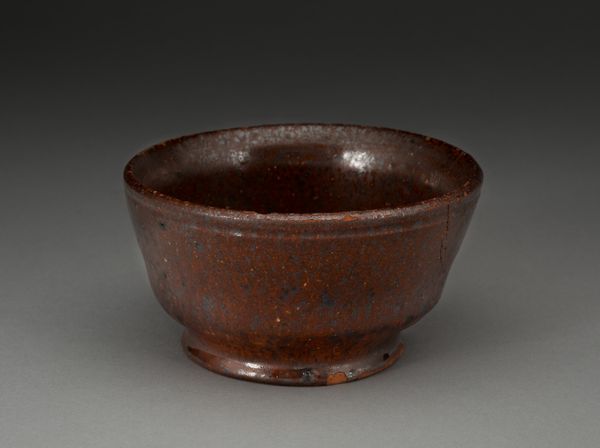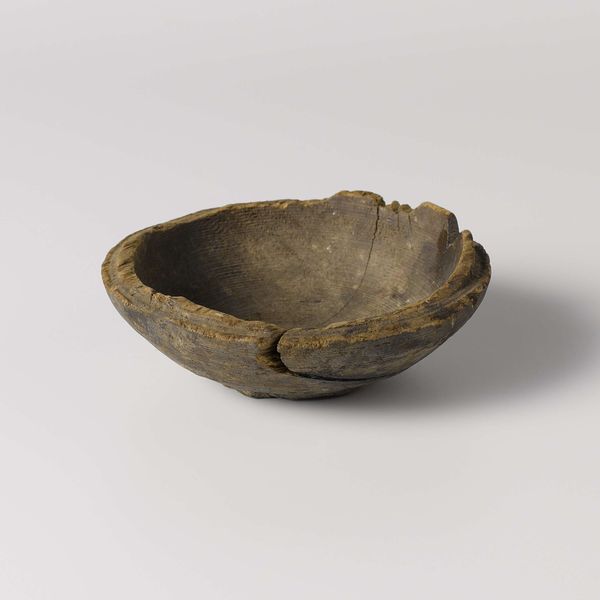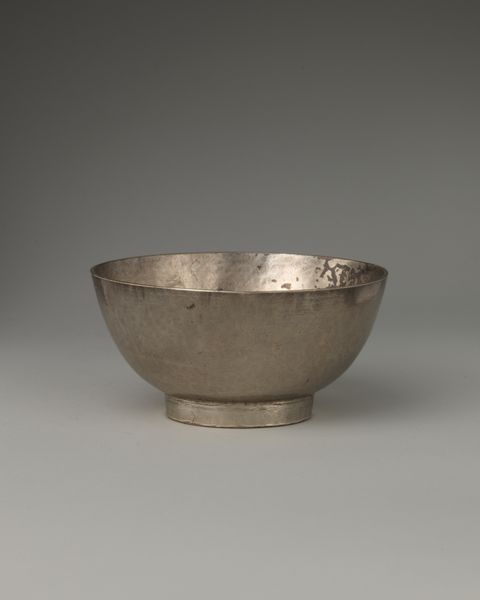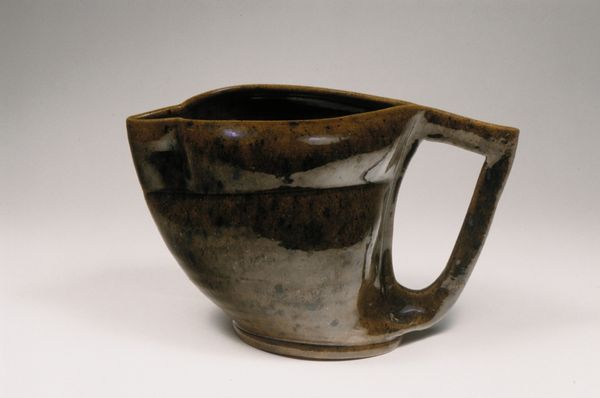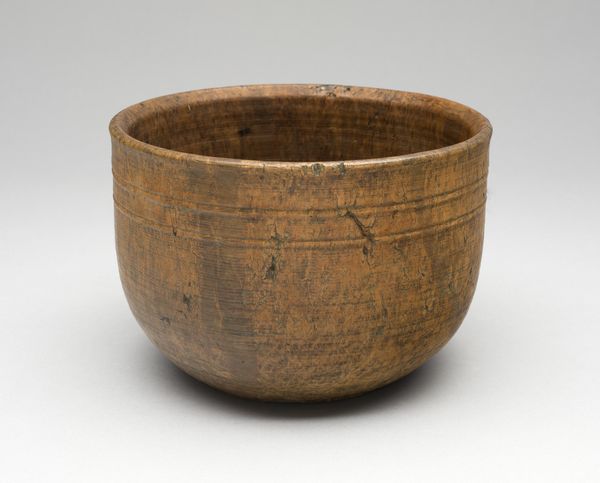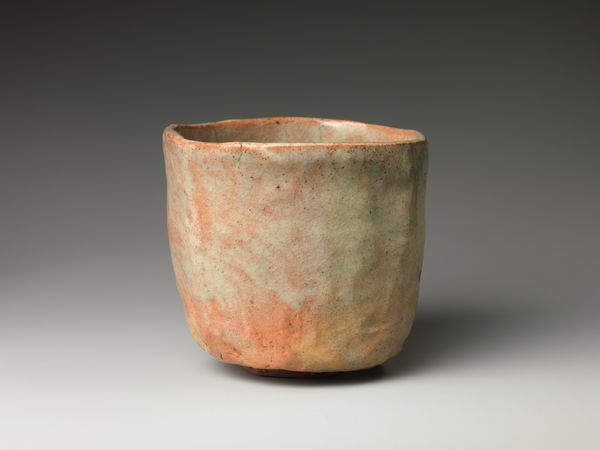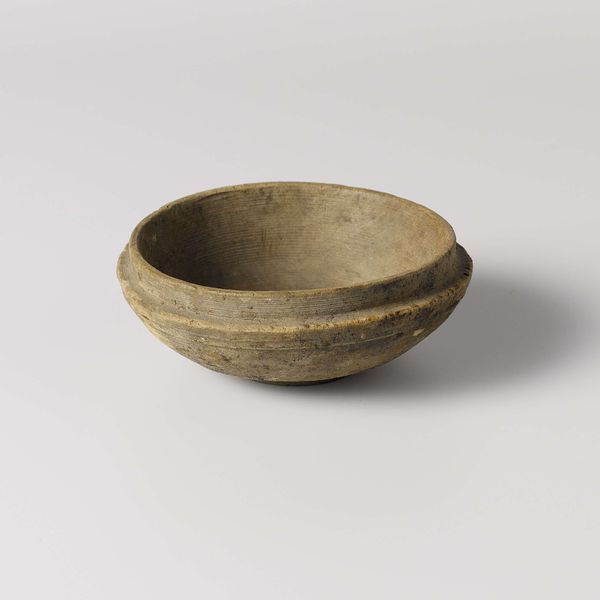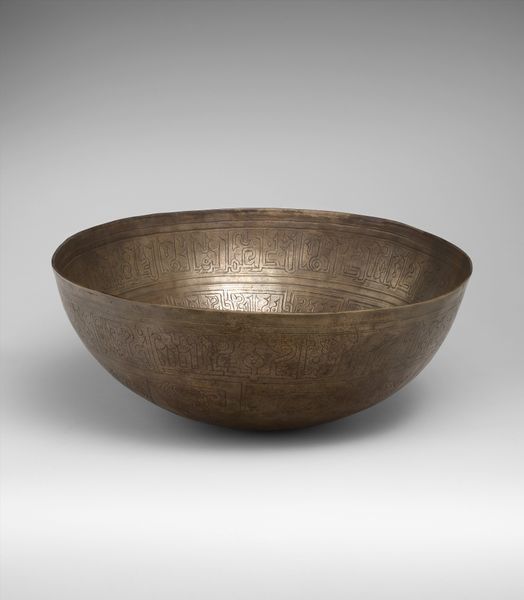
ceramic, earthenware
#
ceramic
#
earthenware
#
stoneware
Dimensions: height 5.0 cm, diameter 9.8 cm
Copyright: Rijks Museum: Open Domain
Editor: This is Pierre-Adrien Dalpayrat's "Set of Two Cups and Saucers," created around 1900 out of ceramic and earthenware. There's a sort of humble quality to the texture, very earth-toned. How would you interpret the symbolism of a seemingly mundane item elevated to an art object? Curator: Dalpayrat captures a powerful dichotomy here. A humble cup and saucer, yes, representing daily ritual. But the intentional imperfection in the glazing elevates the symbolism. Think about the cup as a vessel – not just for tea, but for memory, culture, and connection. Do the colours remind you of anything in particular? Editor: I guess I see earth and fire. Brown merging with blacks, like scorched wood. Curator: Precisely! Fire, transformative and destructive, yet also a symbol of warmth, community and the hearth. By using earthy, volcanic glazing, he invites a contemplation of those forces, making something everyday into something charged with deeper cultural meanings. It transforms something functional into an emotional artefact. Why do you think it's important to remember items such as this in cultural history? Editor: I hadn't thought about the glazing so deeply. The context provides much richer layers. It's intriguing how he connects something everyday to natural forces. Perhaps we save items like these to connect with the ordinary lives of people in the past. Curator: Absolutely. Recognizing these symbols helps to access not only historical moments, but shared cultural memory as well. The imagery of everyday objects, like these cups, transcends mere functionality, enabling dialogue with the cultural ethos of past eras.
Comments
No comments
Be the first to comment and join the conversation on the ultimate creative platform.
